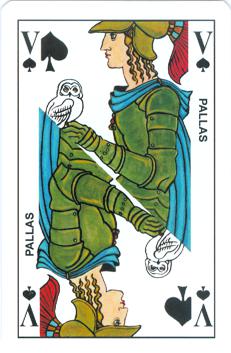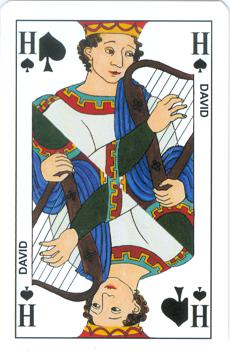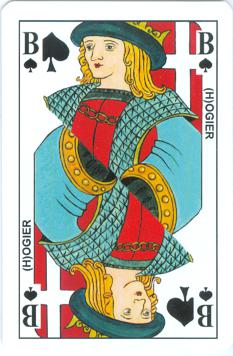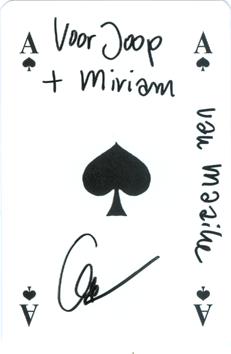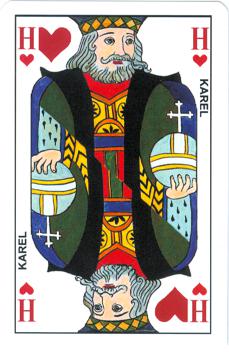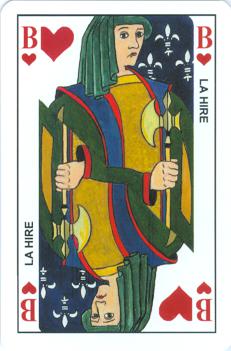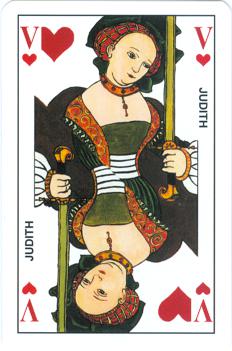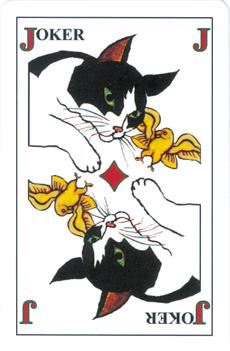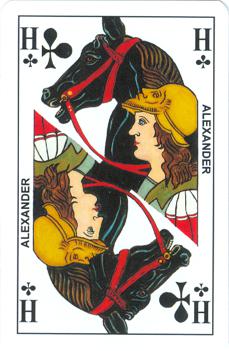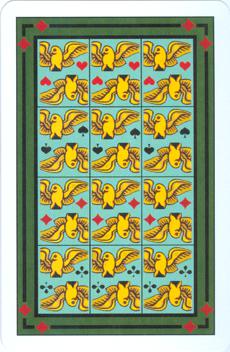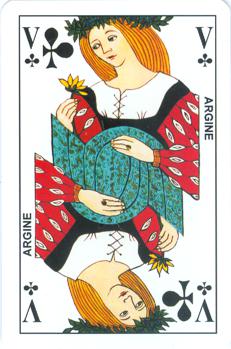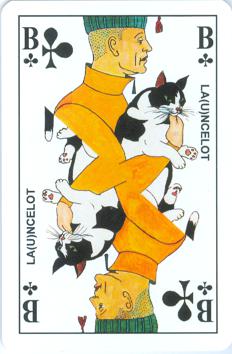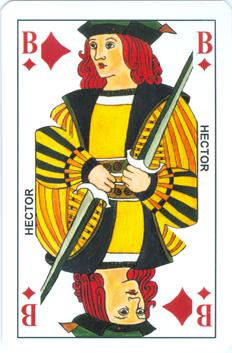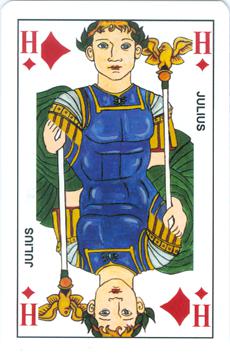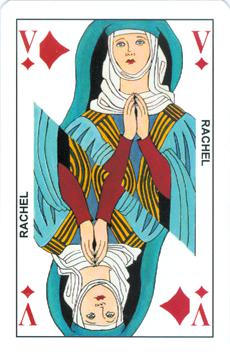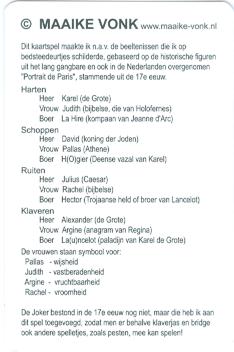|
MAAIKE'S CUPBOARD-BED CARDS |
|
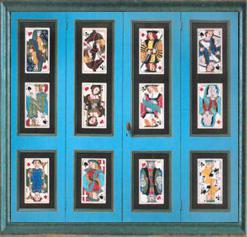
|
It's not the official name of the deck -in fact the deck has no
obvious title- but the idea to create a deck of cards sprang to mind
when Maaike Vonk was commissioned to illustrate the cupboard-bed of
a friend and saw the panels in the doors. Looking at the final result in
its habitat you can see that, although no court card is ever the same,
there's a unity in design that gives the wall (or doors in this case) a
serene look.
I don't think that this could have been achieved with a gallery of
portraits, although this is one of Maaike's specialties. But maybe that
assumption is because I look at it through my playing card collectors
eyes.
Neither the
commissioner nor the artist have had any sort of interest in playing
cards before, but Maaike has done some research on the subject before starting
on this project.
|
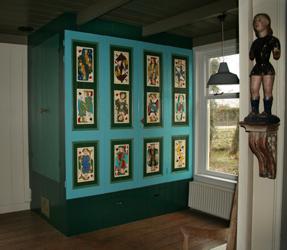
|
|
|
The extra card can be read as a sort of artist statement about the deck
and gives a short history of playing cards. Although I don't really agree
with some parts of the content, I appreciate the interest, research and
effort of the artist.
And of course we both appreciate the signed Ace of Spades. It's a
nice addition to our growing sub-collection of signed artist decks.
On the cupboard-bed the cards seem to be put up randomly in strait
lines, but there's a diagonal pattern of suits to be found. At DXPO we like to disturb strait lines, patterns and serenity, so we've presented
them in our own messy way.........
|
The artist is Maaike Vonk. She was born in 1956 and studied
for one year at the St. Joost Art Academy in Breda. Since 1986 she's working as
an independent artist. For her work she has received several awards, including a
Royal Subsidy in 1988. Maaike Vonk has had exhibitions in different art
galleries and her work was commissioned by private persons as well as companies.
One of her specialties is portraits and in her work she prefers oil on linen.
Her technique is based on the way of working in the Renaissance, in layers,
sometimes up to seven, and her style is realistic with a fine eye for detail.
So for this project she had to adapt her style and technique. The idea of
creating a traditional looking deck, based on a classic pattern, forced her to
work in single colors with figures and faces that had hardly any depth. With a
few exceptions, where a certain depth is suggested, she has succeeded in
creating fine "clear lined" courts in a classic look.
The deck was printed by DSW Drukkerijencombinatie Stramproy Weert BV in an
edition of 500 copies, privately paid by the artist. It's printed on 320 grams
original white card and the cards measure 58 x 88 mm. Contrary to the original
paintings of the cupboard-bed, the cards have rounded corners. The deck was
published in May 2013.
Looking at the
deck through a collector's eye.... the first thing I noticed were the names on
the cards. As stated on the extra card, the deck is based on the Parisian
pattern, in which the courts all have names. In this deck these names were
sometimes translated to their Dutch equivalent. Charles became Karel and
Alexandre became Alexander. David remains the same in both languages. They are
all common Dutch first names, just like Julius. Although the King of Diamonds in
the Parisian pattern is usually called CÚsar, Maaike has chosen to use his
first name here. Typical Dutch informality?
All the other names are left as they are. An exception is made for Hogier and
Lancelot. Personally I find the correctness of the name not important enough to
put the H and the U between brackets. The brackets are not centered, so
they rather disturb the typography too. A nice touch to Hogier is the Danish
flag in the background as reference to his origin.
In the double-imaged Parisian pattern the design of the courts is divided
diagonally and, with the exception of Julius, this is done in this deck too. But
Maaike has opted for the opposite diagonal.
Maaike Vonk has
already been thinking of designing another deck of cards, but no decision about
topic or style has been made yet. Still, this deck is a promising first step and
hopefully she'll surprise us with a new deck one day.
Be sure to visit Maaike's website. There are some great
portraits to see and you can pick up a deck of cards there too, signed by the
artist if you want:
www.maaike-vonk.nl
ARTHOME or ARCHIVES


